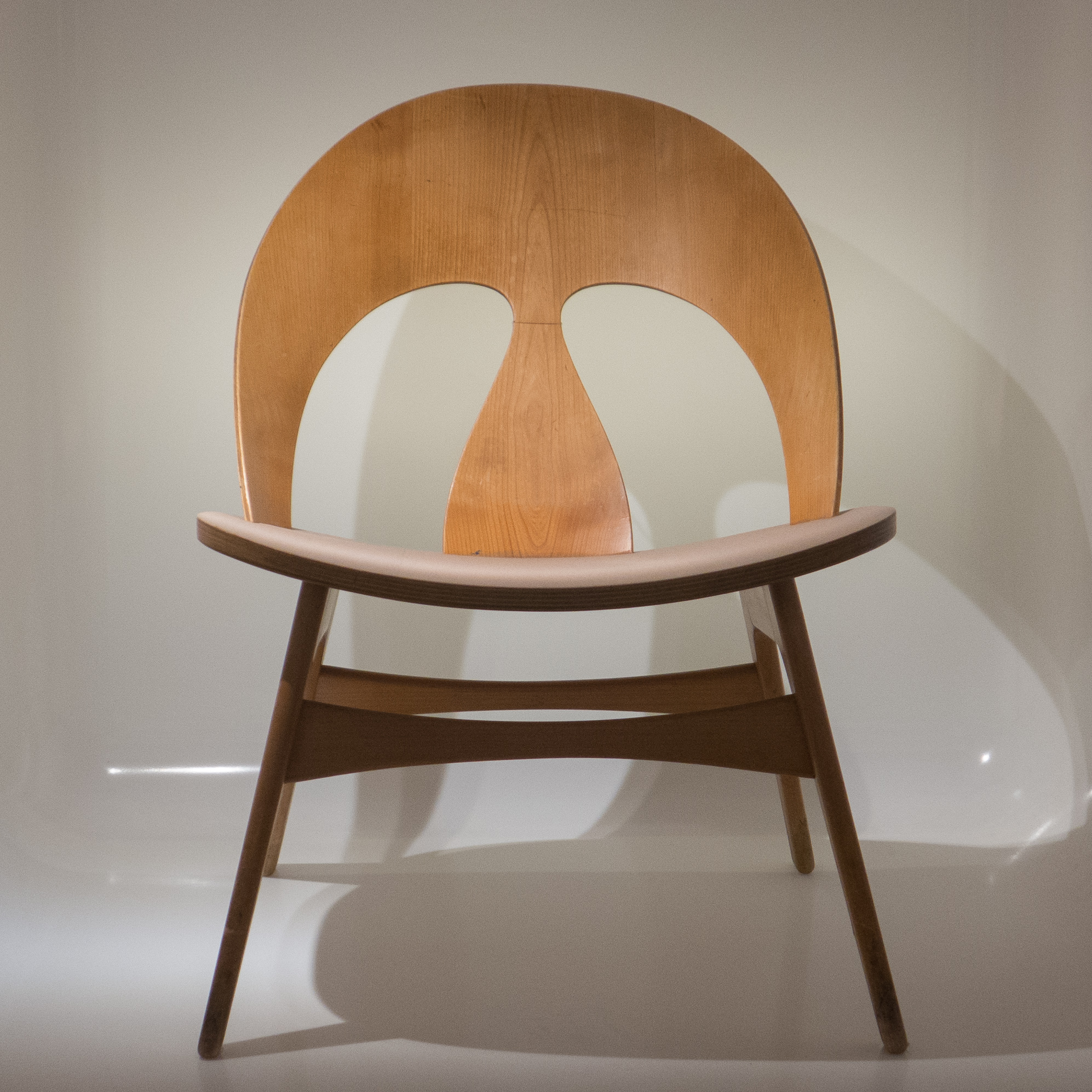Spanish Chair by Børge Mogensen 1958
/photograph taken at the showroom of Fredericia in Copenhagen
Børge Mogensen - the zebra skin and the wall hanging suggest that the photograph was taken in 1958 on the exhibition stand of the cabinetmaker Erhard Rasmussen at Kunstindustrimusset
designed by Børge Mogensen in 1958
shown by Erhard Rasmussen at the Cabinetmakers’ Guild Exhibition at Kunstindustrimuseet in Copenhagen in 1958
made by Fredericia
height: 67 cm
width: 82.5 cm
depth: 60 cm
height of seat: 33 cm
The Spanish Chair designed by Børge Mogensen was first shown in September and October 1958 at the Cabinetmakers’ Guild Exhibition at Kunstindutrimuseet in Copenhagen - now called Designmuseum Danmark. Produced by the Danish furniture company Fredericia - they are now celebrating its 60th anniversary.
The chair was shown in an interesting room setting along with a very large sofa upholstered in a giant check that was said to be large enough to sleep three and there was a zebra skin on the floor and models of yacht hulls across the wall … all with the title “furniture for a country house.”
They were described by the critic Johan Møller Nielsen as -
“the chair and couch for the consummate idler! It is hardly possible to make furniture more expensive than this. The whole interior is wonderful to look at and to to be in, and it would be well suited to be exhibited in one of the rooms of the ‘Louisiana’ museum of modern art as an example of the best furniture design of our age. But it is of no value whatsoever to the average citizen …”
Louisiana - just up the coast from the city - had only opened that August.
Even reading the criticism several times, and having typed it out, it’s not clear if this is praise or criticism.
Of course, it’s ironic that Børge Mogensen, is being damned here, apparently, for designing furniture that the average citizen could not afford, because he was and is best known not just as one of the great designers of his generation but through the 1940s as the head of design for FDB - the Danish Coop - when they produced well-designed modern furniture of a high quality and at the lowest price possible.
For the exhibition in 1958 the set of Spanish chairs were made by the cabinetmaker Erhard Rasmussen but the design was then produced by the Danish furniture company Fredericia who still make the chair.
To mark the anniversary of the Spanish Chair, Fredericia have relaunched the dining chairs, with and without arms, that were designed in 1964 that have the same form of set and back rest with leather stretched across the frame and held in place with large buckles.







































